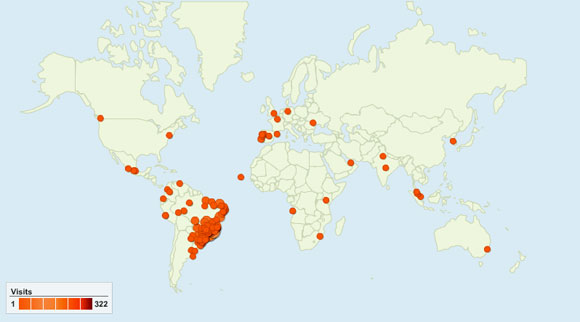Phytoplankton density and trophic state of Canha and Pariquera-Açu rivers, Ribeira de Iguape hydrographic basin, SP, Brazil
Keywords:
lotic eutrophication, phytoplanktonic community, tropical rivers, Ribeira do Iguape Valley (São Paulo state, Brazil)
Abstract
Regarding the lack of studies about lotic eutrophication, mainly for tropical rivers, this research aimed to assess the density of phytoplanktonic community of two tropical rivers located in Ribeira do Iguape Watershed (São Paulo state, Brazil), Canha and Pariquera-Açu Rivers, based on sampling campaigns in January and April, 2007. These results were compared to the mTSI (mean Trophic State Index) values. This index was originally developed for lentic aquatic systems and its calculus depends on total phosphorous, orthophosphate and chlorophyll-a concentrations in water samples. Comparing mTSI values in all sampling stations with the phytoplankton quantitative results, it was possible to verify that mTSI may overestimate the trophic state of lotic ecosystems, since the phosphorus species that integrate its calculus contributed to an improper augmentation on mTSI, which were incompatible with the real associated biological response. Thus, for April sampling, although mTSI values were higher, in general, phytoplankton density were lower (minimum of 83 indmL-1 for Canha River and of 66 indmL-1 for Pariquera-Açu River). In this case, the high total phosphorous concentrations by themselves were not enough to promote proportional phytoplanktonic growth, which was probably limited by other factors, like water temperature, suspended solids concentration, river discharge and zooplanktonic predation. In January, on the other hand, mTSI values were lower, but total phytoplankton density was higher. For this sampling, the lower orthophosphate concentrations in water pointed phytoplankton assimilation of this nutrient.
Published
26/08/2008
Issue
Section
Papers
Authors maintain the copyrights for their work. However, they grant rights of first publication to Ambiente e Agua - An Interdisciplinary Journal of Applied Science. In compensation, the journal can transfer the copyrights, allowing non-commercial use of the article including the right of sending the article to other data bases or publication media. The journal uses the CC BY 4.0 license"






